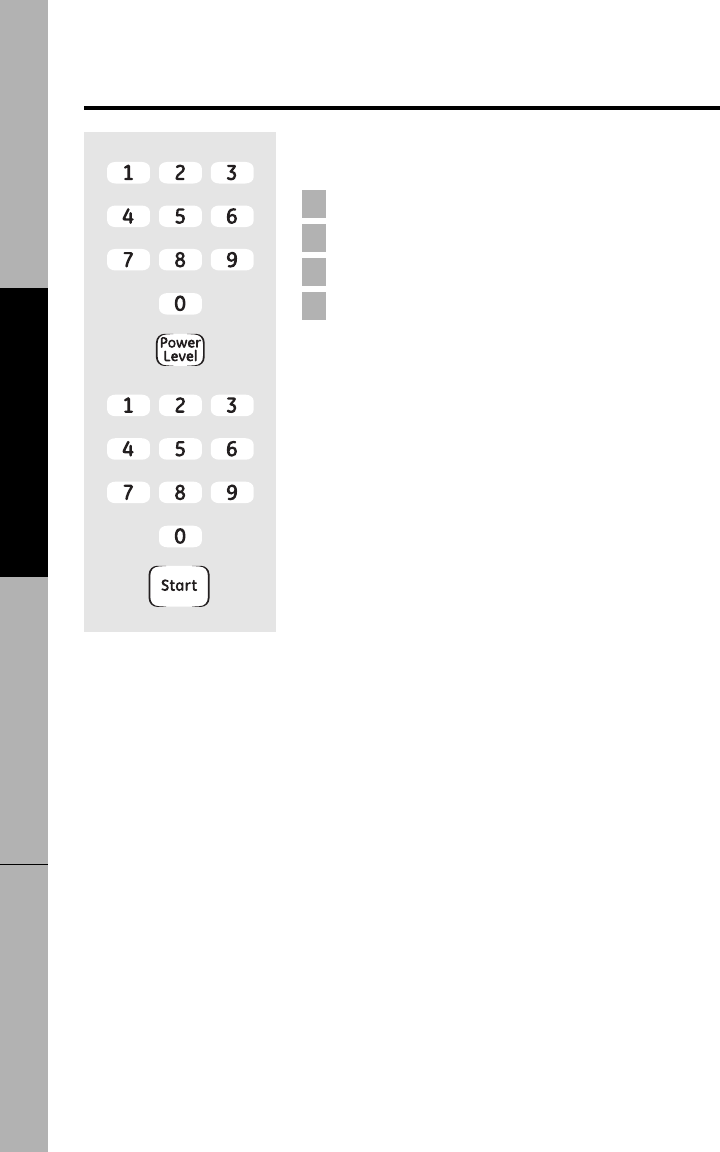
14
The power level may be entered or changed immediately
afterenteringthe cooking time.
Entercooking time.
Press Power Level.
Select desiredpower level 1–10.
Press Start.
Variablepower levelsadd flexibility tomicrowave cooking.
The power levels on the microwave ovencan be
comparedto the surfaceunits on arange.Eachpower
levelgives you microwaveenergy acertain percentof the
time.Power level 7 ismicrowave energy 70%of the time.
Powerlevel 3 is energy 30%of the time. Most cooking will
bedoneon High(power level 10) whichgives you100%
power.Power level 10 will cookfasterbut foodmay need
more frequent stirring, rotating or turning over.A lower
settingwillcookmoreevenly and need less stirring or
rotatingof the food. Somefoods mayhavebetterflavor,
texture or appearance if one of thelower settings is used.
Use alower power level whencooking foods that have
a tendencytoboil over,such as scallopedpotatoes.
Rest periods (when themicrowave energy cyclesoff) give
time forthe food to “equalize” or transferheatto the inside
ofthe food. An example of this is shown withpower level
3—thedefrostcycle.If microwave energy did notcycle off,
the outside of the food would cookbefore theinsidewas
defrosted.
Here are some examples of uses for various power levels:
High 10: Fish,bacon,vegetables, boiling liquids.
Med-High 7: Gentle cooking of meat and poultry;
baking casseroles andreheating.
Medium 5: Slowcooking and tenderizingfor stewsand
less tender cutsof meat.
Low2 or3: Defrosting; simmering; delicatesauces.
Warm 1: Keeping foodwarm; softening butter.
4
3
2
1
About changing the power level.
Safety InformationOperating InstructionsTroubleshooting TipsConsumer Support
